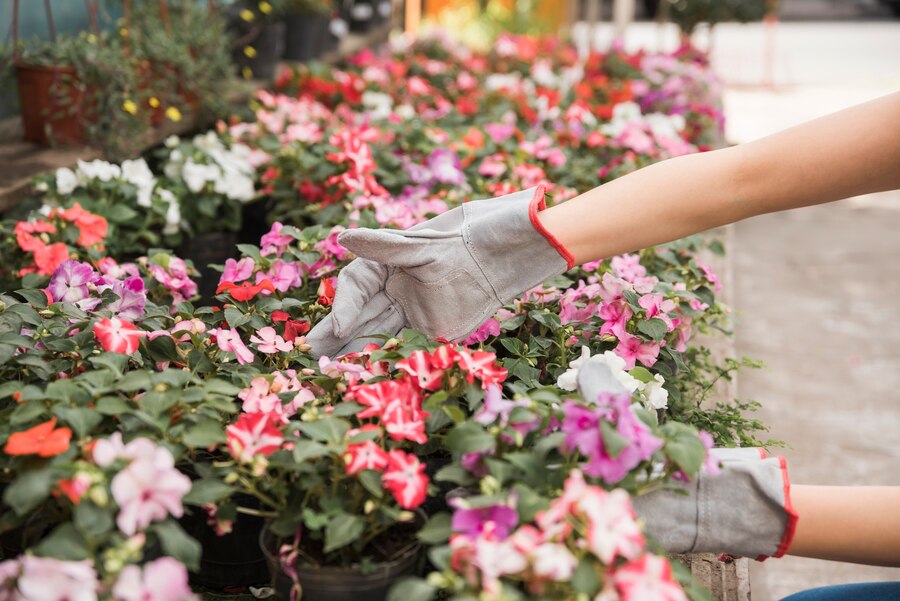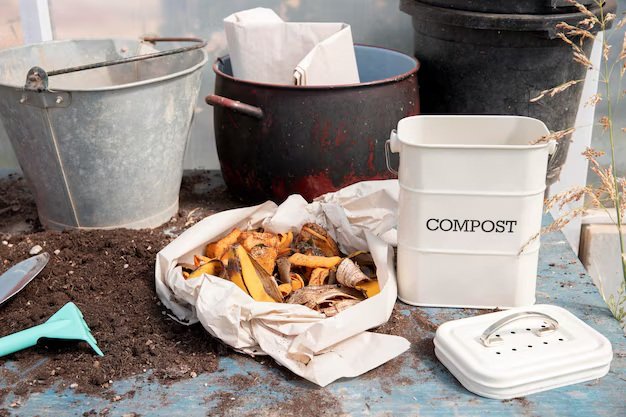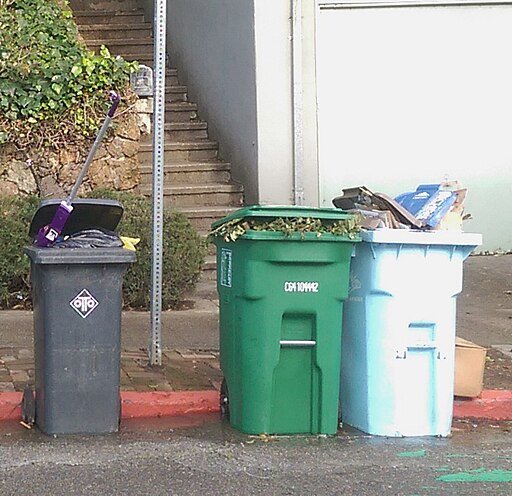6 Expert Tips for Creating a Sustainable Balcony Garden in Urban Spaces
Balcony gardens in urban environments are becoming more popular, as limited space in cities doesn’t seem to deter residents from growing crops and flowers. A balcony garden feels like a way to reconnect with nature in places that have lost their green touch. By transforming concrete floors into gardens, these green spaces offer several environmental benefits—from improving air quality to creating habitats for pollinators and reducing the urban heat island effect.
Studies have shown that green spaces, even small balcony gardens, can positively impact both the environment and human health. According to a study by the University of Melbourne, urban green spaces can effectively reduce the urban heat island effect by cooling the surrounding area.
In this guide, we will discuss expert-backed, practical tips to set up a sustainable balcony garden that fits the urban environment’s constraints.

In This Article
- Why Balcony Gardens Matter in Sustainable Living
- 6 Tips for Creating a Sustainable Balcony Garden
- #2. Consider Weight on the Balcony
- #3. Be More Creative with Growing Containers
- #4. Think Vertical and Horizontal
- #5. Use Bee-Friendly Plants
- #6. Focus on Sustainability
Why Balcony Gardens Matter in Sustainable Living
Environmental Benefits
A balcony garden, regardless of its size, creates an environment that contributes to urban biodiversity. A 2017 study published in BioScience discovered that even small green spaces in cities can improve the biodiversity of insects and birds. Balcony gardens become breeding grounds for pollinators like bees. These small green spaces within cities can help restore the population of beneficial insects in urban environments.
In addition to improving biodiversity, balcony gardens can help mitigate the urban heat island effect. A 2021 study by the U.S. Environmental Protection Agency (EPA) indicates that green spaces can lower temperatures in areas where they are established by 3 to 5 degrees Celsius (37.4 to 41 degrees Fahrenheit). These green spaces help create a cooler environment, transforming outdoor areas into more comfortable relaxation zones.
Exposure to green spaces is also beneficial to mental health. According to a study by Stanford University, spending more time in nature, even in small balcony gardens, can reduce stress and anxiety. Urban gardens offer much more than just fresh fruits, veggies, and beautiful flowering plants.
Personal Benefits
What are the health benefits of a small-scale balcony garden? Studies have shown that you can gain significant mental health benefits from staying close to gardens. Research conducted by the University of Exeter proves that gardening can reduce stress, alleviate depression, and boost mood. Growing fruits, herbs, and vegetables can also reduce your reliance on long-distance food supply chains.
Balcony gardens offer residents the opportunity to grow food organically in small spaces. A properly maintained balcony garden provides fresh fruits and vegetables, saving you money on groceries. According to a study by the U.S. Department of Agriculture (USDA), small-scale urban gardens can yield up to $700 worth of produce annually, depending on the types of plants grown.
Now, let’s talk about the six essential tips for setting up a sustainable balcony garden.
Learn More: 10 Benefits of Wildflower Gardens for the Environment, Health and Biodiversity
6 Tips for Creating a Sustainable Balcony Garden
#1. Inspect the Balcony’s Aspect and Elevation
First and foremost, prioritise safety before setting up your balcony garden. Understanding the structural and environmental factors is key to successfully building your garden.
Balcony Structure and Load Capacity
Balconies in residential buildings have varying load-bearing capacities, and it is crucial to assess how much weight your balcony can safely hold. We recommend consulting a structural engineer to thoroughly assess your balcony’s load capacity before placing flower pots filled with soil. Your balcony must be capable of withstanding the weight of several pots, especially with regular watering.
The load-bearing capacity of most residential balconies ranges from 50 to 100 kg/m² (10 to 20 lbs per square foot), but this can vary depending on the age and design of the building. It’s always advisable to consult an expert before placing any pots on your balcony.
Consulting a Structural Engineer
If you’ve been planning a large balcony garden and are now ready to proceed, contact a structural engineer for a professional assessment. A report by the Institute of Structural Engineers explains that exceeding your balcony’s load capacity can lead to cracks or even structural collapse, so prioritizing safety is essential before starting your garden project.
Tip: Lightweight materials are ideal for your balcony garden. Use fabric grow bags or plastic containers to reduce the overall load on your balcony.
Sunlight and Aspect
Some balconies may be in a position that hardly receives sunlight, but sunlight is essential for plant growth, and the direction of your balcony will determine how much sunlight your plants get. South-facing balconies receive the most sunlight, while north-facing ones get the least.
A study by the University of Sheffield on urban gardening emphasised the importance of sunlight for photosynthesis, which promotes plant growth. While sunlight exposure is important, you should also consider wind exposure. Higher balconies may be vulnerable to strong winds, which can damage plants or dry out the soil quickly. To protect your plants from harsh winds, you can add taller plants to your garden or use trellises and mesh screens.
Table: Best Plant Choices Based on Balcony Aspect
| Balcony Aspect | Sunlight Received | Best Plant Choices |
| South-facing | Full sun (6-8 hours per day) | Tomatoes, peppers, basil, lavender, succulents |
| East-facing | Morning sun (4-6 hours) | Lettuce, spinach, parsley, marigolds |
| West-facing | Afternoon sun (4-6 hours) | Beans, zucchini, sunflowers, thyme |
| North-facing | Low light (2-4 hours) | Ferns, hostas, mint, mosses, begonias |
Tip: If your balcony receives too much sunlight during summer, try adding shade cloths or a pergola to protect your plants from scorching.
According to Dr Gregory Moore, a plant scientist and lecturer at the University of Melbourne, “Understanding the microclimate of your balcony, including sunlight, wind, and humidity, is key to growing a successful garden. Even if you have limited sunlight, there are plenty of shade-loving plants that can thrive.”
#2. Consider Weight on the Balcony
We discussed placing weights on a balcony and emphasised the importance of prioritising safety by assessing your balcony’s load-bearing capacity
Using Lightweight Materials
Lightweight materials are the best option for setting up elevated gardens. Consider using lightweight soil alternatives such as peat-based mixes or coconut coir. These eco-friendly materials offer excellent moisture retention.
Additionally, opt for lightweight containers like plastic pots, fabric grow bags, or even recycled Styrofoam boxes. Grow bags are particularly suitable for balcony gardens because they are flexible, durable, and help aerate the soil.
Drip Irrigation to Minimise Water Weight
Rainfall and regular watering add extra weight to flower pots. However, this can be minimised with the installation of drip irrigation. A study by the American Society of Landscape Architects suggests that installing a drip irrigation system can reduce water usage by up to 70%. Drip irrigation supplies water directly to the plant’s roots, ensuring efficient water use.
Tip: Use water-absorbing crystals or add a layer of mulch on top of your soil to reduce water evaporation and help keep the weight of your garden manageable.

Learn More: 10 Sustainable Food Practices Examples: A Comprehensive Guide to Green Living
#3. Be More Creative with Growing Containers
Container gardening is suitable for balcony spaces to maintain a manageable weight, but sustainability-minded gardeners are increasingly turning to creative, upcycled options for growing their plants.
Upcycling and Recycled Containers
Sustainable gardening in an urban environment is more than just growing plants in elevated spaces. When choosing lightweight materials, avoid plastic containers, as they can leach harmful chemicals into the soil. Instead, use recycled or upcycled containers like wooden crates, tin cans, or old buckets.
Example: A creative gardener in Brooklyn, New York, transformed old wine barrels and wooden pallets into a beautiful and sustainable container garden. The barrels were used to grow larger plants like tomatoes and peppers, while the pallets served as vertical planters for herbs and flowers.
Tips: You can line old wooden containers with burlap or plastic to make them more durable and water-resistant, ensuring they last longer.
Self-Watering Containers
If you’re looking for a more efficient way to water your plants, try making self-watering containers. These containers feature a reservoir at the bottom that allows water to wick up into the soil, providing consistent moisture without the risk of overwatering. You can buy a self-watering container or make one yourself using recycled materials like plastic bottles.
DIY Example:
- Take a 2-litre plastic bottle and cut it in half.
- Invert the top half into the bottom half, creating a reservoir for water.
- Fill the top half with soil and plant your seeds or seedlings.
This simple system ensures your plants receive consistent moisture without the risk of overwatering.
#4. Think Vertical and Horizontal
The available space on a balcony may not be sufficient for the number of plants you intend to grow. That’s why it’s crucial to make the most of every inch of your balcony, and vertical gardening offers an excellent way to achieve this
Vertical Farming Techniques
Vertical gardening is an innovative technique that involves using structures like trellises, shelves, and hanging containers to grow plants upwards. This unique method allows gardeners to cultivate more plants in smaller spaces. According to a study by the University of Florida, vertical gardening is especially beneficial in urban areas, where horizontal space is often limited
Popular vertical gardening structures
- Trellises: Ideal for plants like cucumbers, beans, and tomatoes.
- Hanging Planters: Perfect for trailing plants such as strawberries, ivy, and even herbs.
- Plant Towers: Stackable planters are excellent for growing multiple plants in a vertical arrangement.
Tip: Vertical gardening can help prevent pests from destroying your crops. By keeping plants off the ground, it becomes more challenging for insects and rodents to establish breeding grounds.
Horizontal Use of Space
If you have more floor space, try arranging pots and containers in rows or clusters to create the ideal layout. Use shelving units to elevate some containers, creating unique layers that give your garden a vibrant appearance.
Dr. Dickson Despommier, a recognised authority on vertical farming, suggests, “Vertical gardening is an excellent way to grow a large variety of plants in small spaces. By using height to your advantage, you can create a highly productive garden, even in a limited area.”
#5. Use Bee-Friendly Plants
Gardens in urban environments can help pollinators rebuild their populations. Adding bee-friendly plants to your balcony garden supports local pollinators and creates a natural green space that enhances biodiversity.
Choosing Bee-Friendly Plants
Bees are attracted to brightly coloured flowers that are rich in nectar and pollen. Native plants are among the best options for supporting local pollinators.
Here are some popular bee-friendly plants:
- Lavender (Lavandula spp.): A perennial herb that produces fragrant flowers. Lavender is highly attractive to bees.
- Coneflowers (Echinacea spp.): These bright, daisy-like flowers are long-lasting and attract both bees and butterflies.
- Bee Balm (Monarda spp.): As the name suggests, bee balm is a favourite among pollinators.
- Sunflowers (Helianthus annuus): These tall, sun-loving flowers produce large amounts of pollen for bees and seeds for birds.
Learn More: 10 Outdoor Plants That Are Good for the Environment
#6. Focus on Sustainability
Sustainability should always be the top priority for any balcony garden project. Implement eco-friendly practices to reduce your environmental footprint while creating a sustainable garden with minimal or zero waste.
Water Conservation
Installing a rainwater collection system is an effective way to conserve water. By using a rain barrel, you can collect runoff from your balcony and reuse that water on your plants, reducing the need for tap water.
Drip Irrigation: Installing a drip irrigation system is another water-saving technique that delivers water directly to the plant’s roots, ensuring efficient use of water.
Composting in Small Spaces
Composting organic waste in small spaces is entirely possible. Try worm composting (vermicomposting) with kitchen scraps to create nutrient-rich compost for your plants. You can grow food organically even with a small worm bin. Consider getting one today or learning how to make one yourself.
Natural Pest Control
Avoid using synthetic pesticides to manage pests in your garden, as these chemicals are toxic to the environment and can pose health risks. Instead, opt for natural pest control methods by introducing beneficial insects like ladybugs and predatory mites to manage aphid populations. Additionally, plant marigolds naturally repel pests.
Conclusion
A balcony garden, regardless of its size, creates an environment that contributes to urban biodiversity. These green spaces may be small, but they have a significant impact on urban ecosystems by reducing the urban heat island effect, improving air quality, and providing a sanctuary for pollinators. Most importantly, they offer you a tranquil space to connect with nature from the comfort of your home.
By following these expert-backed tips—considering your balcony’s structural limitations, maximising vertical space, using sustainable materials, and supporting biodiversity—you can create a thriving green space.
Remember, every small garden contributes to the larger goal of fostering sustainability and biodiversity in urban environments. Let your balcony be part of the solution.







